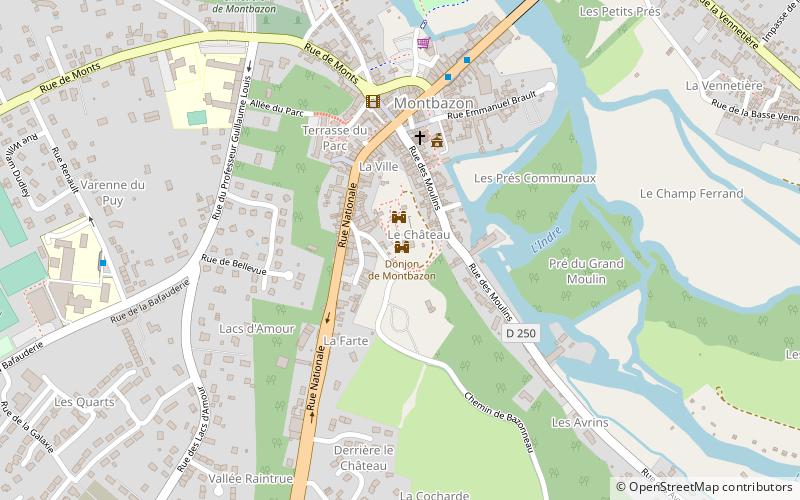Donjon de Montbazon, Montbazon


Facts and practical information
The castral site of Montbazon is a set of fortified settlements located in the French commune of Montbazon in the department of Indre-et-Loire and the Centre-Val de Loire region.
Overlooking the Indre valley and controlling the land and river routes, the development of the site began at the end of the 10th or beginning of the 11th century with the construction of a master tower generally attributed to Foulques Nerra. This development is done at the end of a rocky promontory overlooking the valley. The construction of the tower was part of the struggle for influence between the houses of Blois and Anjou in this part of Touraine. This tower was raised shortly afterwards and was progressively supplemented, until the 15th century, by a forebay, then a jacket and finally two enclosures protecting the whole site. A Renaissance castle was built in the 15th century and famous people stayed there for more or less a long time; however, it was destroyed a little more than three centuries later when, unoccupied, it was largely dilapidated. The seigniorial chapel and a part of the enclosure undergo the same fate.
Since the French Revolution, but especially from the 20th century onwards, successive owners have carried out alterations and restorations, first and foremost William Perry Dudley from 1922 to the end of the 1950s and the Attertons in the 2000s. In the 21st century it is the master tower, still 28 m high, which remains the most significant element of this site open to the public; however, landslides on the hillside are weakening the edge of the promontory and represent a danger for the houses built below.
The keep was listed as a historical monument by order of October 28, 1926, a protection measure extended by order of May 24, 2012 to the entire castle site, which has been open to the public since 2003.
Montbazon
Donjon de Montbazon – popular in the area (distance from the attraction)
Nearby attractions include: Château d'Artigny, Sorigny, Château de Candé, Parcours botanique au fil de l'Indre.











